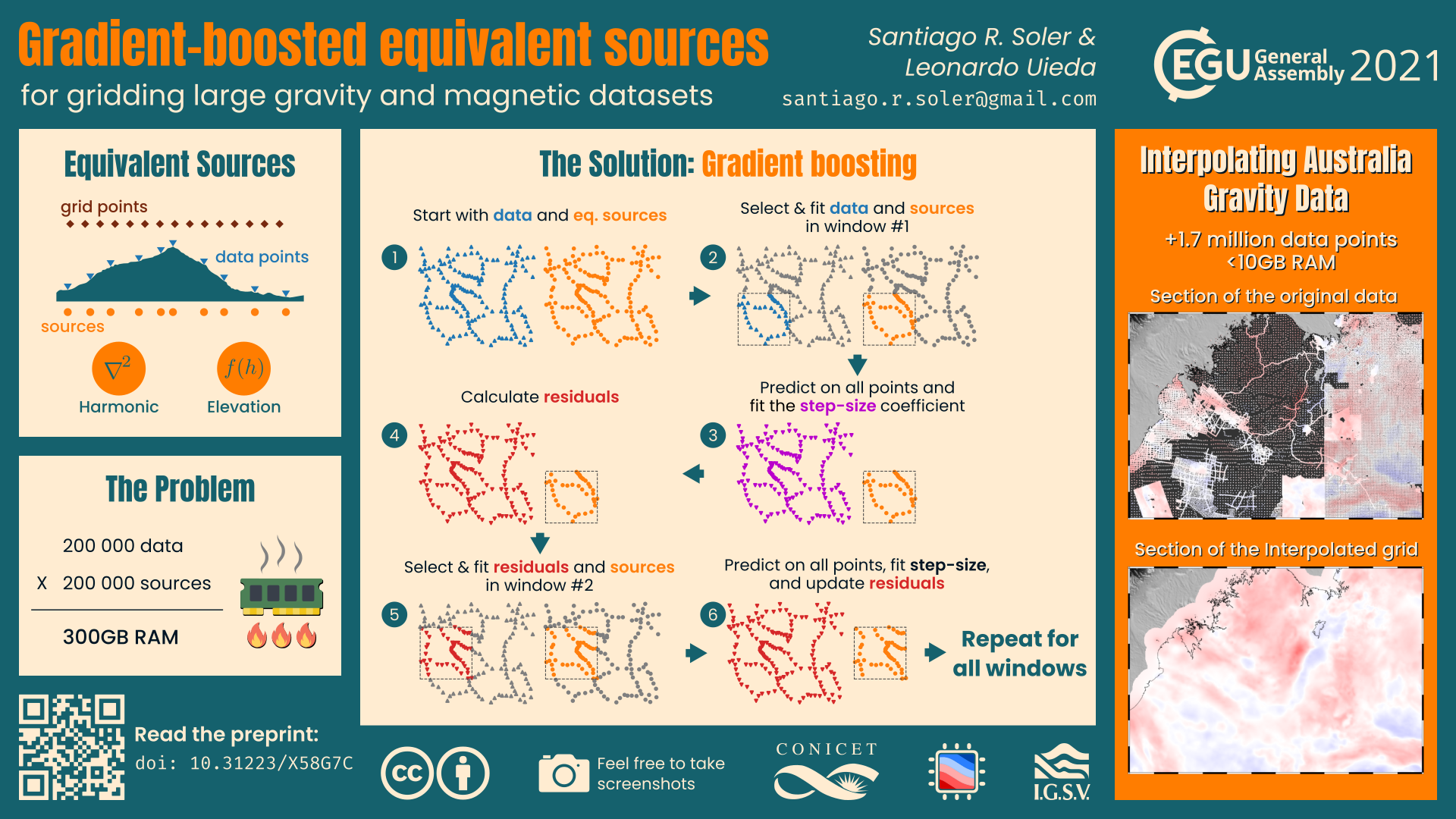Gradient-boosted equivalent sources for gridding large gravity and magnetic datasets
Info
- Presented at: EGU21 General Assembly
- Organized by: European Geoscience Union
- Source code: compgeolab/eql-gradient-boosted
- Creative Commons Attribution 4.0 International
- doi: 10.5194/egusphere-egu21-1276
About
The EGU21 was held online as the EGU2020, but on this edition EGU offered us authors to upload a single slide for the vPICO talk and optionally a display file that could be a short video or any extra material.
On this opportunity I presented the latest results of our research on gradient-boosted equivalent sources: an interpolation method for large gravity and magnetic datasets. I presented a single slide on the vPICO talk and a 5 minutes video where I take more time to explain the new method.
vPICO Slide

Video
doi: 10.6084/m9.figshare.14515188
Abstract
The equivalent source technique is a well known method for interpolating gravity and magnetic data. It consists in defining a set of finite sources that generate the same observed field and using them to predict the values of the field at unobserved locations. The equivalent source technique has some advantages over general-purpose interpolators: the variation of the field due to the height of the observation points is taken into account and the predicted values belong to an harmonic field. These make equivalent sources a more suited interpolator for any data deriving from a harmonic field (like gravity disturbances and magnetic anomalies). Nevertheless, it has one drawback: the computational cost. The process of estimating the coefficients of the sources that best fit the observed values is very computationally demanding: a Jacobian matrix with number of observation points times number of sources elements must be built and then used to fit the source coefficients though a least-squares method. Increasing the number of data points can make the Jacobian matrix to grow so large that it cannot fit in computer memory.
We present a gradient-boosting equivalent source method for interpolating large datasets. In it, we define small subsets of equivalent sources that are fitted against neighbouring data points. The process is iteratively carried out, fitting one subset of sources on each iteration to the residual field from previous iterations. This new method is inspired by the gradient-boosting technique, mainly used in machine learning solutions.
We show that the gradient-boosted equivalent sources are capable of producing accurate predictions by testing against synthetic surveys. Moreover, we were able to grid a gravity dataset from Australia with more than 1.7 million points on a modest personal computer in less than half an hour.